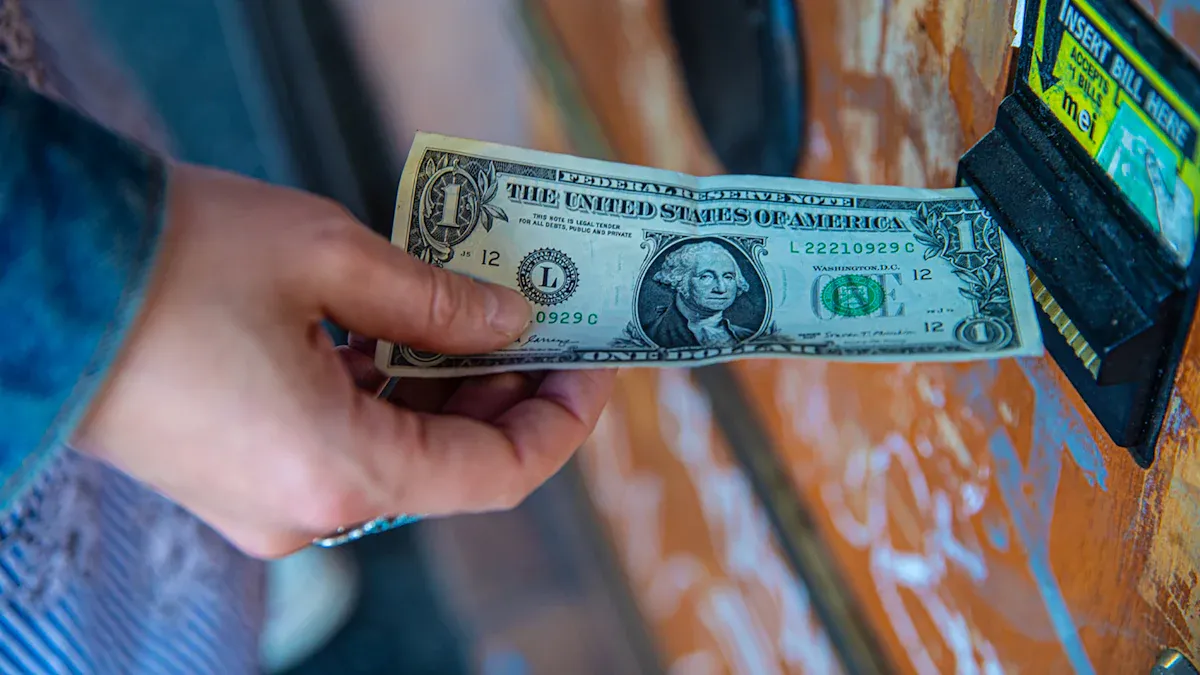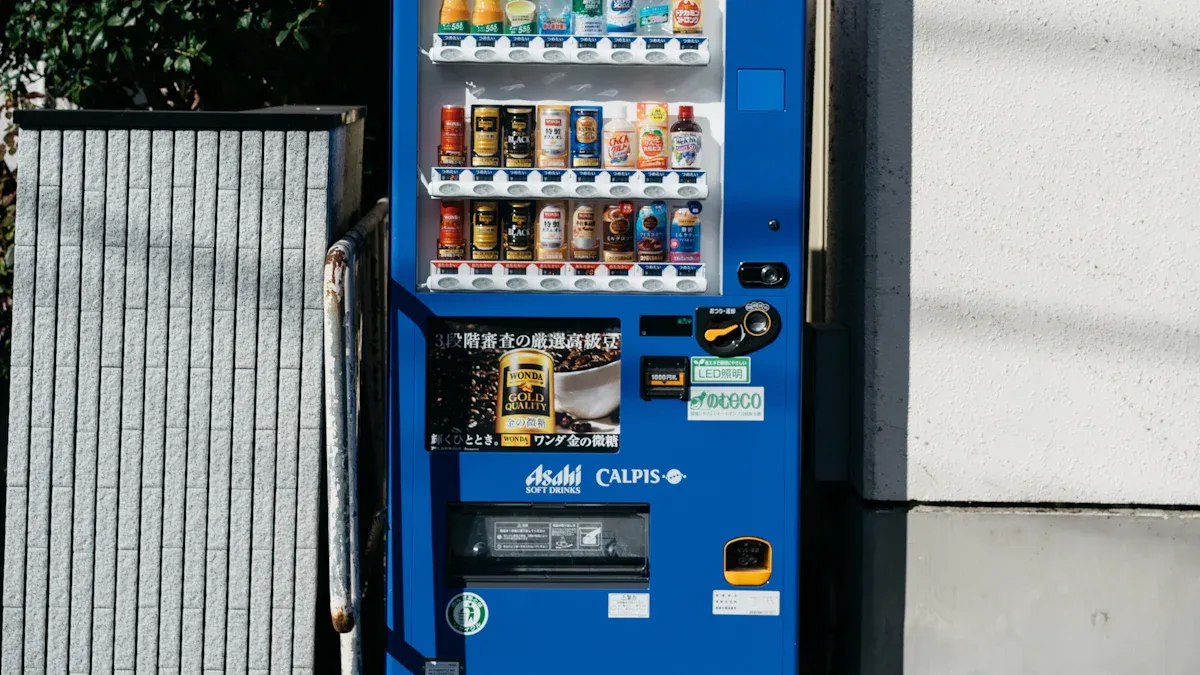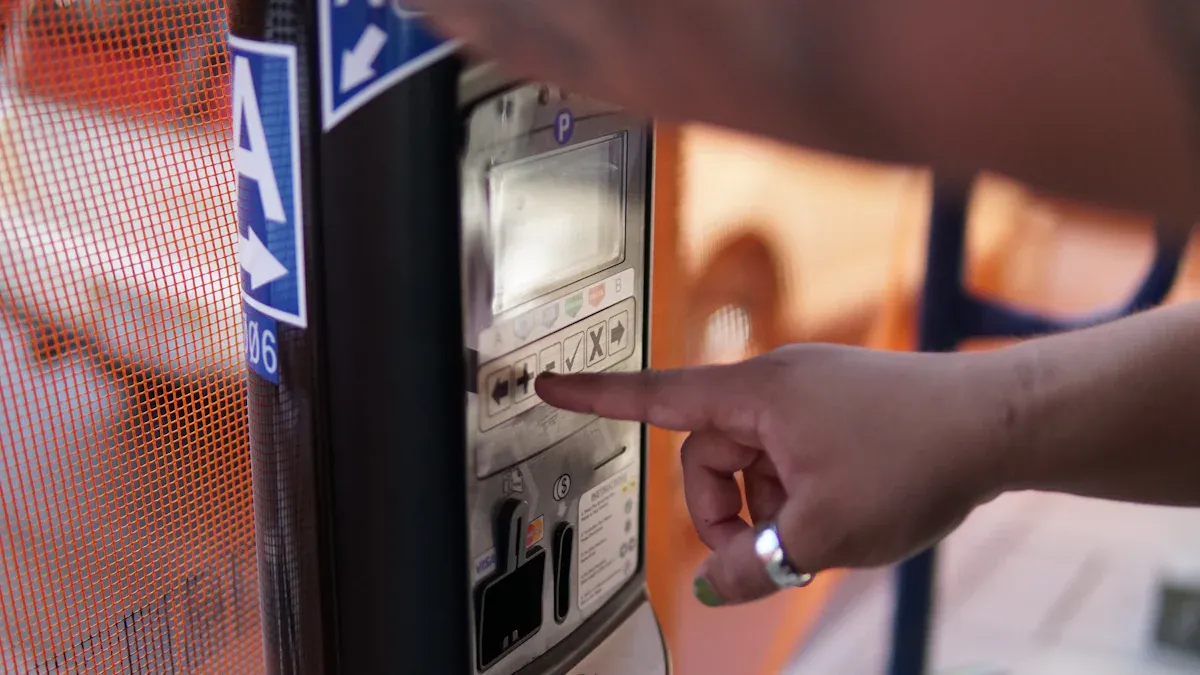How Vending Machines Handle Big Bills

Imagine you stand in front of a vending machine with only a $20 bill in your wallet. You wonder if the machine will accept it or reject it. Many vending machines accept big bills, but you may still face problems. A recent study found that half of users cannot buy snacks when the machine only takes smaller bills. Security, reliability, and convenience matter most when you use cash at these machines.
Key Takeaways
Most vending machines accept bills up to $20. Always check the machine's sticker for accepted denominations to avoid frustration.
If your bill gets rejected, it may be dirty or wrinkled. Smooth it out or try using a different bill or coins for a better chance of success.
Modern vending machines use advanced technology to detect counterfeit bills. Trust these machines to keep your money safe during transactions.
Cash recyclers in vending machines help provide change for big bills. This makes your experience smoother and helps operators save time.
Consider using cashless payment options like cards or mobile wallets for quicker and safer transactions.
Vending Machines and Big Bills

Accepted Bill Limits
You often see vending machines with stickers that show which bills you can use. Most machines accept bills up to $20. You may wonder why you cannot use $50 or $100 bills. Manufacturers know that people get $20 bills from ATMs and use them for small purchases. They want you to have a smooth experience, so they set the limit at $20. This helps you buy snacks or drinks without worrying about having the right change.
Modern vending machines use advanced payment processing systems. These systems let you pay with paper money, coins, or even cards. When you insert a bill, the machine checks if it matches the accepted denominations. If you try to use a $50 or $100 bill, the machine will reject it. This protects you and the operator from problems with change and counterfeit money.
Tip: Always check the sticker or display on the vending machine before you try to pay. This saves you time and helps you avoid frustration.
Why Some Bills Are Rejected
Vending machines use special sensors to read bills. Sometimes, the machine rejects your bill even if it is the right denomination. Here are some reasons why this happens:
The machine detects counterfeit money by checking the weight of the bill.
Bills that are smudged or faded may not be read accurately.
Dust on the bill validator can block the sensors.
Wrinkled or blurred bills are hard for the machine to validate.
Bills that are improperly minted, even if real, may not work.
You may feel annoyed when your bill gets rejected. The machine does this to keep payments safe and reliable. If your bill does not work, try smoothing it out or using another one. You can also use coins or smaller bills for payment processing.
When vending machines only accept smaller bills, you may spend more freely. Research shows that people feel less attached to small bills, so they buy snacks more often. This makes your experience better and helps operators earn more.
Note: If your bill keeps getting rejected, look for another vending machine or use a different payment method.
Bill Validators Technology

How Bill Validators Work
You interact with bill validators every time you use cash in vending machines. These devices play a key role in making sure your money is real and accepted quickly. Bill validators use several components to check your bill:
Optical sensors scan the bill for size, thickness, and security markers.
Magnetic sensors look for special ink used in real currency.
Microprocessors analyze data from the sensors to decide if the bill is genuine.
Bill transport mechanisms guide your bill through the validation process.
Cash boxes store accepted bills securely.
When you insert a bill, the validator starts by pulling it inside. The sensors scan the bill’s features. The microprocessor compares these features to known patterns of real money. If everything matches, the vending machine accepts your bill and lets you make a purchase. If something seems wrong, the validator rejects the bill and returns it to you.
Modern vending machines use advanced bill validators that go beyond basic checks. Some use AI algorithms to recognize notes and spot counterfeits. IoT connectivity allows operators to monitor usage and diagnose problems remotely. You benefit from faster transactions and fewer errors.
Tip: If your bill gets rejected, try smoothing it out or using another one. Sometimes, dirt or wrinkles confuse the sensors.
Anti-Counterfeit Features
Bill validators in vending machines use many methods to fight counterfeit money. These features help protect you and the operator from fraud. Here are some of the main detection methods:
Description | |
|---|---|
Optical Sensing | Photocells or cameras analyze the pixel patterns and colors of the bill. |
Magnetic Detection | Sensors check for magnetic properties in the ink used on real bills. |
Physical Attribute Verification | Validators look for embedded threads and watermarks visible under UV light. |
You see these anti-counterfeit features working every time you use vending machines. The validator may shine a light on your bill to check for hidden marks. It may test the ink with magnets or scan for special threads. These steps happen in seconds, so you get your snack or drink quickly.
Over the years, bill validators have become much smarter. In the early 1990s, embedded bill acceptors changed how vending machines handled cash. By 2000, new technology allowed machines to track bills from the moment you insert them until they reach secure storage. Today, bill validators use fluorescence, infrared, and laser detection to spot fake bills. Real-time tracking systems add extra security.
Modern vending machines rely on advanced imaging and magnetic ink detection. UV detectors reveal invisible inks and watermarks. Magnetic detectors find special threads and inks. These technologies make it hard for counterfeit bills to slip through. You can trust that your money is safe when you use vending machines.
Note: Bill validators use image recognition and sensor technology to check every bill. This keeps your transactions secure and helps vending machines run smoothly.
Handling Rejected Bills
Common Reasons for Rejection
You may feel frustrated when a vending machine rejects your bill. Machines use advanced technology to check every bill for authenticity and quality. Sometimes, the machine suspects counterfeit money and ejects it during the verification process. Photocells scan the ink shades, and magnetic sensors look for special inks. These systems reach almost perfect accuracy in spotting fake bills.
Physical defects also cause problems. You might see your bill rejected if it is faded, wrinkled, or torn. Even legitimate bills can fail if they look worn out. Here are some common reasons:
The machine has no coins for change.
Something is wrong with the money, such as damage or dirt.
The bill is an unsupported denomination, like a $50 or $100 bill.
The machine suspects the bill is counterfeit.
Vending machines protect you and the operator by rejecting bills that do not meet strict standards. You help keep payments secure when you use clean, undamaged bills.
What Users Can Do
You have several options if your bill gets rejected. Try these steps to improve your chances of a successful transaction:
Clean the bill acceptor gently. Dust and debris can block sensors.
Smooth out your bill. Remove wrinkles or dirt before inserting it.
Check if the vending machine has enough coins for change. Machines may reject big bills if they cannot give change.
Use a different bill or switch to coins for your payments.
Reset the machine if possible. Sometimes, a quick restart fixes software glitches.
Make sure all connections look secure if you notice loose wires or panels.
Tip: If your bill keeps getting rejected, try another vending machine or use a different payment method. You save time and avoid frustration.
You can make your experience smoother by following these steps. Clean bills and working machines help you get snacks or drinks without trouble.
Security and Convenience
Fraud Prevention
You rely on vending machines to keep your money safe. Modern vending machines use advanced fraud prevention tools to protect your transactions. When you insert a big bill, the machine checks for security features like holograms, watermarks, and color-shifting inks. High-speed sensors and scanners analyze each bill for authenticity and condition. If the bill does not meet strict standards, the machine rejects it.
You benefit from several layers of fraud prevention. Machines use infrared detection, contact image sensors, and magneto-resistive sensors to spot fake bills. These technologies work together to make sure only real currency gets accepted. Secure payment systems use end-to-end encryption to protect your payment information. Many machines now offer contactless and cashless payment systems, which reduce risks linked to cash handling.
Tip: You can trust modern vending machines to keep your money safe with strong fraud prevention measures.
Technology Type | Description |
|---|---|
Infrared Detection | Finds special inks in real currency. |
Contact Image Sensors | Scans bills and records serial numbers. |
Magneto-Resistive Sensor | Detects magnetized parts of bills for authenticity. |
Size & Thickness Check | Measures bills to prevent counterfeits. |
Multiple Technologies | Combines UV, MG, IR, CIS for better fraud prevention. |
Cash Recyclers and Change
You may wonder how vending machines handle big bills and give you change. Cash recyclers make this possible. These devices store and reuse bills and coins inside the machine. When you pay with a big bill, the cash recycler gives you change in smaller bills or coins. This improves currency handling and makes your experience smoother.
Cash recyclers help vending machine operators too. They reduce the need for frequent cash replenishment, which lowers costs by up to 20%. Operators spend less time handling cash and more time serving you. Improved cash availability means you get your snacks or drinks without delay.
Note: Cash recyclers boost efficiency and make payment systems more reliable for everyone.
Payment Method | Convenience | Security |
|---|---|---|
Credit Card Readers | Quick and secure payments | EMV technology reduces fraud risk |
Mobile Wallets | Seamless transactions via smartphones | Touch-free experience enhances safety |
QR Code Payments | Easy access and payment | Reduces physical contact |
NFC Technology | Fast transactions | Secure data transmission |
You enjoy better service when vending machines accept big bills. Operators see higher sales because more people can use the machines. Cash recyclers and strong fraud prevention make modern vending machines safe and convenient for everyone.
You can trust modern vending machines to handle your big bill safely and quickly. These machines use advanced technology to keep your money secure and make buying snacks easy. Many vending machines now accept $20 bills and offer cashless payment options like credit cards or mobile wallets. You get more choices and better security.
Try to use clean bills for smooth transactions.
Choose cashless payments when possible for extra safety.
Look for machines that support many payment methods.
Using a vending machine has never been easier or safer. Next time, check your payment options and enjoy a worry-free purchase!
FAQ
Can you use a $50 or $100 bill in most vending machines?
You cannot use $50 or $100 bills in most vending machines. Most machines accept bills up to $20. This helps prevent problems with giving change and stops counterfeit bills.
Why does the vending machine reject my $20 bill?
Your $20 bill may be dirty, wrinkled, or torn. The machine may not have enough change. Sometimes, the sensors cannot read the bill. Try smoothing the bill or using a different one.
What should you do if your bill keeps getting rejected?
Try these steps:
Smooth out your bill.
Use a different bill or coins.
Check if the machine has a sticker showing accepted bills.
Choose another payment method if possible.
Do vending machines give change for big bills?
Many modern vending machines give change for $10 or $20 bills. Some use cash recyclers to return smaller bills or coins. Always check the machine’s display for change availability before inserting a big bill.
Are cashless payments safer than using big bills?
Cashless payments, like cards or mobile wallets, offer extra security. You avoid handling cash and reduce the risk of losing money. Many vending machines now support these options for your convenience.
See Also
Understanding How Vending Machines Accept Large Denominations Effectively
The Progression of Vending Machines: Accepting Larger Currency Notes
Discovering The Flexibility of Multi-Price Beverage Vending Machines
Analyzing The Expenses Associated With Vending Machines
Understanding Vending Machine Pricing: Key Features That Influence Costs
